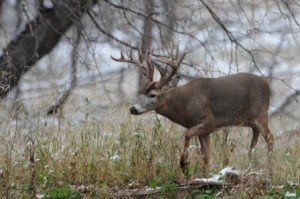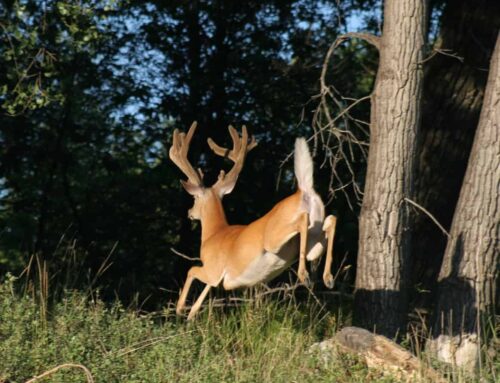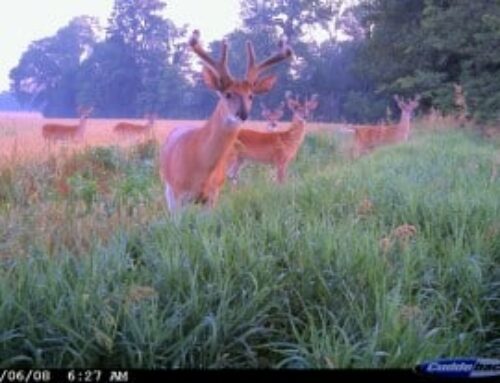 It’s November 1 and the seeking phase of the rut is beginning or in full swing in most regions (except the Deep South). Some bucks begin to expand their range, wandering out of their home core areas to take the estrus temperature of does within 1,000 acres or so. Other big boys roam closer to home, especially in broken farmland where feed and cover are prime. If 2 dominant deer cross paths, a hair-raising stare down or a heavyweight fight might break out. Watch for a buck “lip curling,” or sniffing a doe’s urine to check her state of estrus. Bucks keep blazing rubs and pawing scrapes.
It’s November 1 and the seeking phase of the rut is beginning or in full swing in most regions (except the Deep South). Some bucks begin to expand their range, wandering out of their home core areas to take the estrus temperature of does within 1,000 acres or so. Other big boys roam closer to home, especially in broken farmland where feed and cover are prime. If 2 dominant deer cross paths, a hair-raising stare down or a heavyweight fight might break out. Watch for a buck “lip curling,” or sniffing a doe’s urine to check her state of estrus. Bucks keep blazing rubs and pawing scrapes.
- Around November 5, give or take a few days, the seeking phase launches into the chase phase. Bucks young and old dash at most every doe they see. If a doe smells right, she’ll attract several boys, including quite possibly one or 2 shooters. During the next 2 or 3 weeks, mature bucks may lose 20 to 25 percent of their body weight as they dog and breed does.
- Around November 7 to 10 the rut phases merge and it’s wild in the woods. You might spot a giant buck trolling for a doe…or chasing one…or breeding a gal that pops into estrus. Some bucks rub and scrape wildly to vent sexual energy, but the serious sign-post marking winds down.
- The peak-breeding phase should last roughly 2 weeks in regions where the buck:doe ratio is fairly balanced. Some days you’ll spot bucks trolling for does or chasing them. Other days you won’t see squat, because the big boys are holed up in thickets, tending and breeding the gals for 1 to 3 days. Studies have shown that bucks impregnate 80 percent or more of the mature does during this time.
- On November 21 or so, the rut begins to wane in most areas. Some old, surviving bucks go underground for few days, resting and licking their wounds. Other big boys go back to checking ridges and bottoms where they rubbed and scraped a month ago, looking to hook up with a last hot doe.
- The November full moon is late this year, waxing big on the 20th. Many does and bucks will move hard between 10:00 a.m. and 2:00 p.m. for the next few days, so stay out there.
- The post-rut begins the last week of the month. Some big deer keep cruising and checking scrapes into the first week of December. Does and bucks congregate both morning and evening near the best late-season food sources—leftover mast, soybeans, corn, browse, forbs. Rut-thin deer feed like pigs to bulk back up before the cold, snowy winter. Thanksgiving into early December post-rut is still a great time to shoot a big deer, so keep grinding.






My favorite time of year. Leaving Friday and its hard to pay attention at work!
good luck!